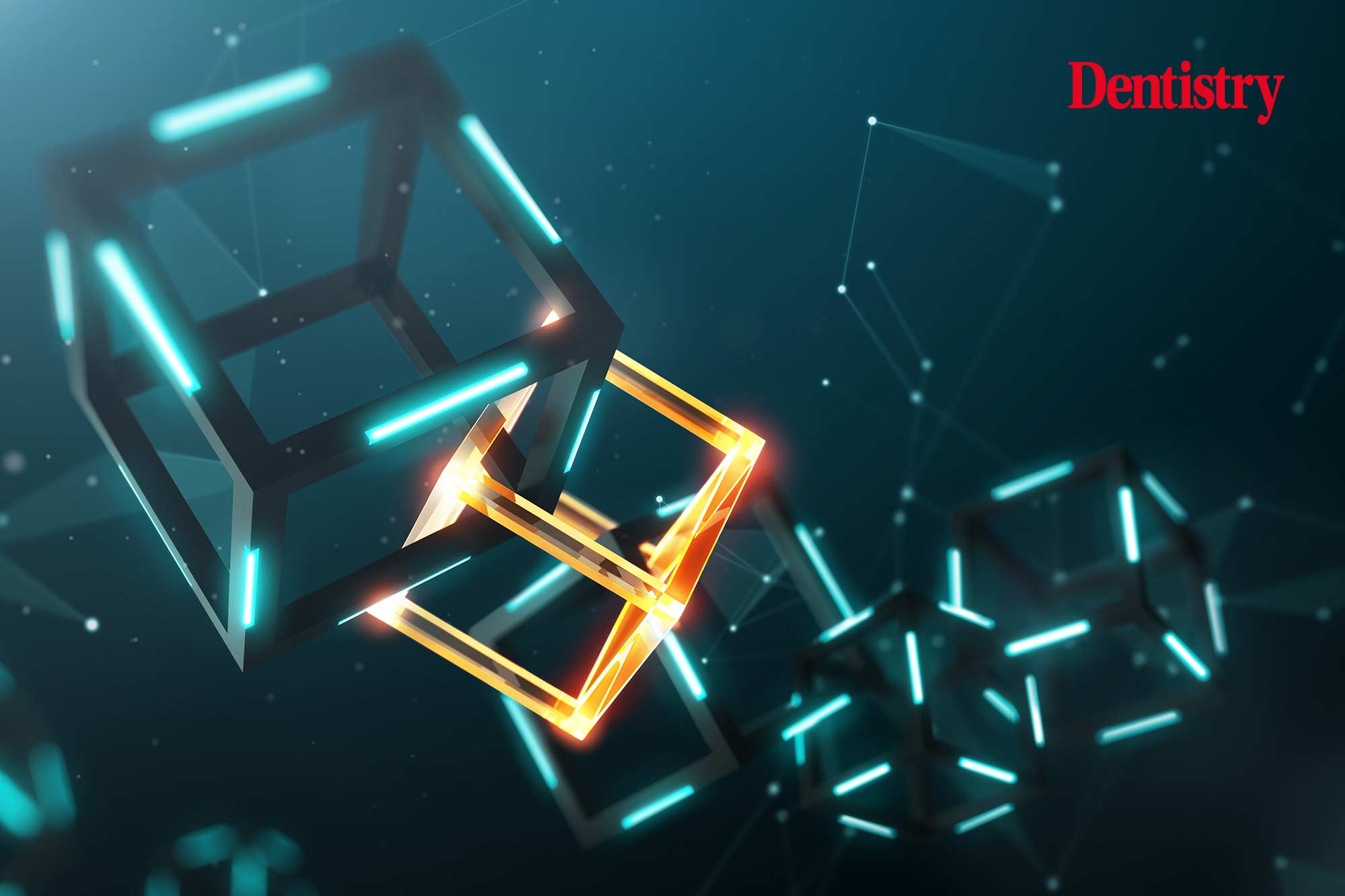
Dr Jeffrey Sherer discusses the ins and outs of blockchain and how it fits in with today’s dentistry.
What is the blockchain?
When you mention blockchain to many dentists, they think it is some orthodontic device for correcting malocclusion.
In fact, the blockchain is an exciting digital technology that was first outlined in 1991 by Stuart Haber and Scott Stornetta, a mathematician and physicist who wanted to implement a system where document timestamps could not be tampered with.
The blockchain put simply is a distributed digital ledger that stores data of any kind. The name comes from its structure, in which individual records, called blocks, are linked ‘chained’ together.
What this means is that the latest block added to the chain references the information contained within the preceding block, which itself references the information in the block before it, and so on. This evidence of the sequence in which information is added to the chain makes the record permanent and unchangeable. This has profound implications for reliability and validity.
What is it used for?
The most common use of blockchain today is for cryptocurrencies, like Bitcoin. When people buy, exchange or spend cryptocurrency, the transactions are recorded on a blockchain. So, there is a clear and transparent record of the transaction.
Blockchain can also be used to record and transfer the ownership of a variety of different assets. This is currently very popular with digital assets like NFTs (non-fungible tokens), a representation of ownership of digital art and videos.
A real-life example of this can be for dentists who take clinical photos or videos. They are able to use the blockchain as proof of ownership of their work.
There are several companies beginning to conduct medical research using the blockchain as evidence of promoting data integrity, and compliant data exchange in clinical trial contexts. In the future, we will see more use of the blockchain for dental research and clinical studies.
It will eventually become the gold standard.
How can this help my dental practice and patients?
Currently, the main benefit of blockchain technology is that it provides the ability for patients to pay with cryptocurrencies. These transactions can be done on the spot, via a digital transfer that is almost instantaneous and is extremely convenient for both patient and the dental practice.
Patients can pay from anywhere in the world, without bank charges and in real time. Cryptocurrencies eliminate the need to wait several days for a payment to clear (as is the case currently with credit and debit card transactions) and avoids potential issues with having credit cards declined or chargebacks.
Under The Data Protection Act, dental practices have an obligation to keep patient data private. Currently, most practices rely on standard encryption technology to secure patient information. Unfortunately, bypassing the encryptions is possible and presents a risk to personal data.
Since blockchain systems are secured by cryptography, it is virtually impossible to change or tamper with patients’ digital records.
Patients who require copies of their records, must contact their dentist if they want access to their personal dental records because the data is stored in a centralised server. Thus, it often proves difficult when patients wish to submit their dental records or X-rays to another dental practice.
Furthermore, with many different brands of software being used by dental practices the conversion to transfer records from one practice to another is difficult. Blockchain technology helps shift the custody of dental data from a dentist practice to the patient.
In time, this will allow patients to easily access their dental records through secure app-based systems. The ability to make dental records easily accessible to patients will ultimately lead to better patient outcomes.
Follow Dentistry.co.uk on Instagram to keep up with all the latest dental news and trends.


